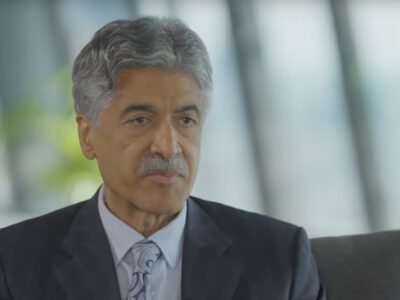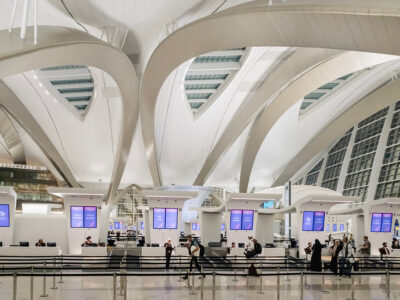Emirates turns to AI to take on the growing challenge of flight turbulence, as climate-driven weather patterns make the phenomenon more frequent and severe.
The Dubai-based airline said it is working with global partners to leverage AI, machine learning, and real-time turbulence data to improve safety and enhance the passenger experience across its network.
The initiative has already led to a significant reduction in unexpected severe turbulence incidents over the past year, according to Emirates.
Emirates shakes up turbulence mitigation
Captain Hassan Alhammadi, Divisional Senior Vice President Flight Operations at Emirates, said the airline is committed to mitigating turbulence using advanced technologies and collaboration.
He said: “We recognise that turbulence remains an ongoing challenge that cannot be completely eliminated, but we’re committed to doing everything possible to minimise unexpected severe turbulence encounters through working with partners who share our vision of using advanced technologies and adopting AI to enhance operations”.
He added that the systems are already delivering tangible benefits, saying “While we cannot promise turbulence-free flights, these initiatives have contributed to a significant reduction in unexpected severe turbulence incidents over the past year, helping make journeys safer and more comfortable for our customers.”
Alhammadi noted that Emirates’ multi-layer approach, including participation in the IATA Turbulence Aware programme, contributes valuable data and insights to the aviation industry as airlines collectively tackle the global meteorological challenge.
Three-tier turbulence detection system
Emirates’ weather detection setup integrates SkyPath, Lido mPilot from Lufthansa Systems, and IATA Turbulence Aware, creating a complementary system that combines AI analytics, pilot feedback, and real-time atmospheric data.
- 1. SkyPath: In partnership with SkyPath, Emirates is developing AI- and machine learning-based weather models that detect turbulence patterns often missed by traditional methods.
SkyPath aggregates real-time turbulence reports from thousands of aircraft, using Eddy Dissipation Rate (EDR) data, ADS-B transponder data, and SkyPath’s patented iPad accelerometer technology to translate aircraft movement into precise turbulence measurements. This information gives pilots actionable, real-time insights, allowing them to navigate smoother routes and anticipate potential disturbances - 2. Lido mPilot: Emirates’ long-standing partnership with Lufthansa Systems provides pilots with a mobile navigational charting platform, enriched by data from the German Weather Service. Lido mPilot delivers live cloud and convection data, turbulence and icing predictions, and high-accuracy weather reporting, helping crews anticipate atmospheric conditions well in advance
- 3. IATA Turbulence Aware: As part of the IATA Turbulence Aware Programme, Emirates both contributes and consumes global, real-time turbulence data. The platform aggregates information from participating airlines worldwide, providing a constantly updated view of atmospheric conditions.
By integrating these datasets into its electronic flight bag (EFB) charting application, Emirates’ pilots can visualise live turbulence zones and make immediate route adjustments — improving comfort, safety, and fuel efficiency.
AI-driven insights for safer skies
Emirates said its AI and machine learning ecosystem allows for continuous data refinement and predictive accuracy, even in regions without active flight data or in cases of clear air turbulence, which remains one of aviation’s most unpredictable hazards.
This integrated approach, combining crowd-sourced data, predictive analytics, and real-time visualisation, enables the airline to make proactive flight decisions rather than reactive manoeuvres — reducing risk for both passengers and crew.
Emirates said these innovations are part of its broader commitment to operational excellence, safety, and sustainability, aligning with the UAE’s wider push for AI adoption across critical sectors.








